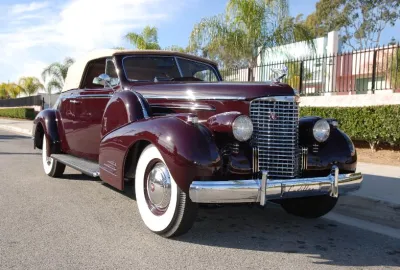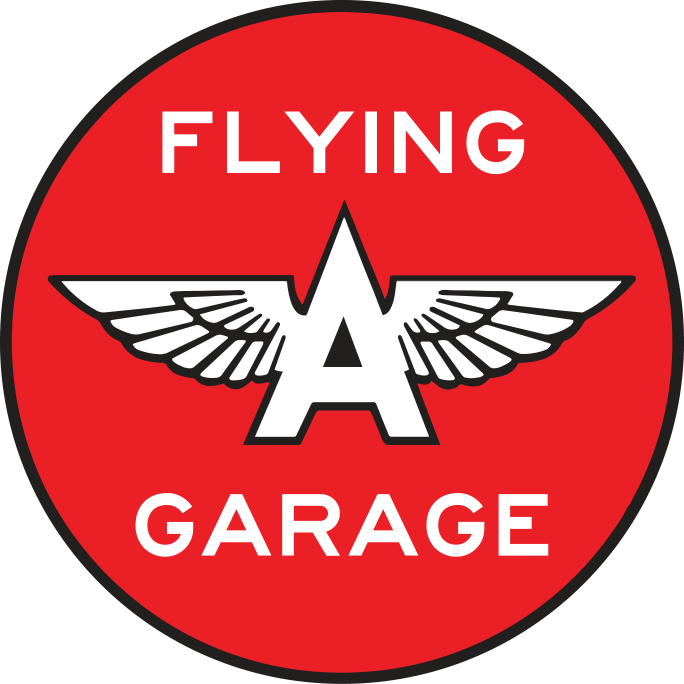
In 1938, Cadillac dramatically changed the body and engine designs of its V-16 models. Body styles became more streamlined with an Art Modernaire motif, the style of the era. The 1938 Cadillac was designed by a team led by Bill Mitchell, under the guidance of Harley Earl. The body and chassis of the 1938 Cadillac, unlike its predecessor models was entirely constructed of steel. Since 1930 the V-16 engine had overhead valves with cylinder blocks splayed at 45º.
Beginning in 1939, the engine was of a flat head design with the cylinder blocks splayed at 135º. The newly designed V-16 had 1,627 parts compared to 3,273 in the prior model, and weighed 250 pounds less. The massive V-16 engines were for all intents and purposes the equivalent of two V-8 engines connected in tandem. The engines were equipped with duel carburetors, oil bath air cleaners, distributors, manifolds, coils and fuel pumps. The two banks of 8 cylinders shared a crank case. The new V-16 did not need the polished surfaces of its predecessor as it was well hidden in the engine compartment.
The 1938 vehicle on display has a 141” wheel base making it one of the longest convertible coupes ever produced. V-16 production for 1938 yielded only 311 vehicles of which only 10 were convertible coupes. During the three years that this body style was produced, (1938, 1939, 1940) only 498 V-16 Cadillacs were manufactured of which only 19 were convertible coupes. List price of a 1938 Cadillac model 9067 was $5,440.00.
A pair of jump seats in the rear compartment is a feature that was unique to the 1938 V-16 Convertible Coupe. The interior of this car was “SO” or special order, hence the pleated leather seat covers.
The 1938 Cadillac Series 90 is certified by the Classic Car Club of America.
